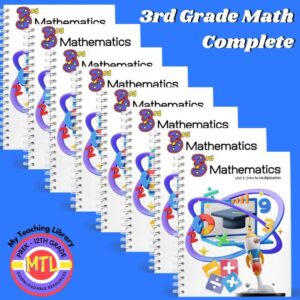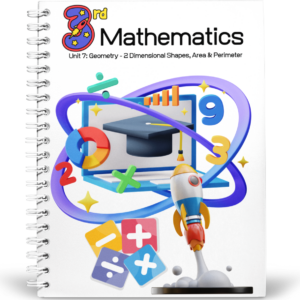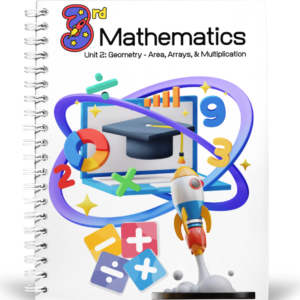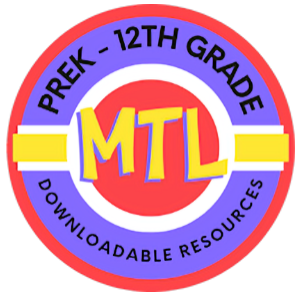Showing all 3 resultsSorted by latest
-
Sale!
 Buy Now
Buy Now$40.50Original price was: $40.50.$35.00Current price is: $35.00.3rd Grade Math Complete is an 8 unit program that covers all of the important skills and concepts typically covered in 3rd grade. Each unit includes the student and teacher edition. This resource can be used within a classroom setting, co-op or with individual students. Because it can be used within a group setting, you’ll find many activities for students to complete in pairs of 2. If you are homeschooling multiple children close in age, it would be easy to adapt and teach students together. If you are homeschooling a single child, you can easily adapt these activities through your one-on-one interaction!
You do not need to use the entire program if you are only wanting to focus on one or a few specific Math skills and concepts. If this is the case, you can purchase each unit separately.
Units:
- – Unit 1: Intro to Multiplication
- – Unit 2: Geometry: Area, Arrays and Multiplication
- – Unit 3: Reviewing Addition & Subtraction within 1,000
- – Unit 4: Relating Multiplication and Division
- – Unit 5: Fractions – Number Lines, Equivalent & Comparing
- – Unit 6: Measurement – Length, Time, Volume & Weight
- – Unit 7: Geometry – 2 Dimensional Shapes, Area & Perimeter
- – Unit 8: Review of 3rd Grade Skills & Concepts
-
 $5.00Buy Now
$5.00Buy NowIn this unit, students reason about attributes of two-dimensional shapes, calculate area and learn about perimeter. Students learn to classify broader categories of shapes (quadrilaterals and triangles) into more specific sub-categories based on their attributes. For instance, they study examples and non-examples of rhombuses, rectangles, and squares, and come to recognize their specific attributes. Students also expand their knowledge about attributes that can be measured. In this unit, students learn the meaning of perimeter and find the perimeter of shapes. They consider geometric attributes of shapes (such as opposite sides having the same length) that can help them find perimeter. As the lessons progress, they consider situations that involve perimeter, and then those that involve both perimeter and area. These lessons aim to distinguish the two attributes (which are commonly confused) and reinforce that perimeter measures length or distance (in length units) and area measures the amount of space covered by a shape (in square units). At the end of the unit, students solve problems in a variety of contexts. They apply what they learn about geometric attributes of shapes, perimeter, and area, to design a park, a West African wax print pattern, and a robot. They then solve problems within the context of their design.
Includes: Student and Teacher Editions
Size: 318 pages -
 $5.00Buy Now
$5.00Buy NowIn this unit, students encounter the concept of area, relate the area of rectangles to multiplication, and solve problems involving area. Students make sense of another attribute of shapes: a measure of how much a shape covers. They begin informally, by comparing two shapes and deciding which one covers more space. Later, they compare more precisely by tiling shapes with pattern blocks and square tiles. Students then focus on the area of rectangles. They notice that a rectangle tiled with squares forms an array, with the rows and columns as equal-size groups. This observation allows them to connect the area of rectangles to multiplication—as a product of the number of rows and number of squares per row. To transition from counting to multiplying side lengths, students reason about area using increasingly more abstract representations. They begin with tiled or gridded rectangles, move to partially gridded rectangles or those with marked sides, and end with rectangles labeled with their side lengths. Students also learn some standard units of area—square inches, square centimeters, square feet, and square meters—and solve real-world problems involving area of rectangles. Later in the unit, students find the area and missing side lengths of figures composed of non-overlapping rectangles.
Includes: Student and Teacher Editions
Size: 306 pages

